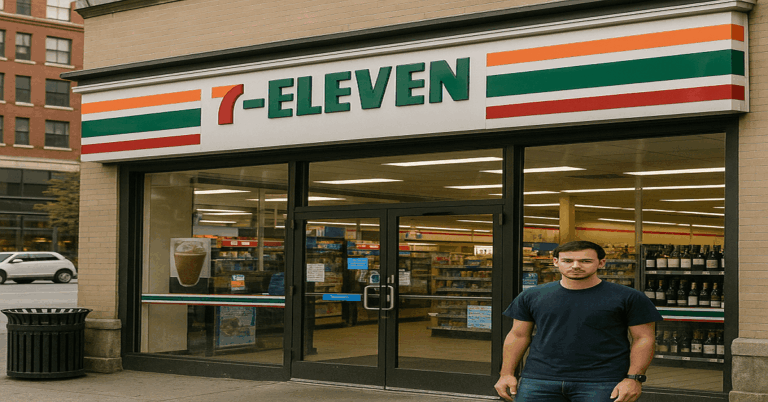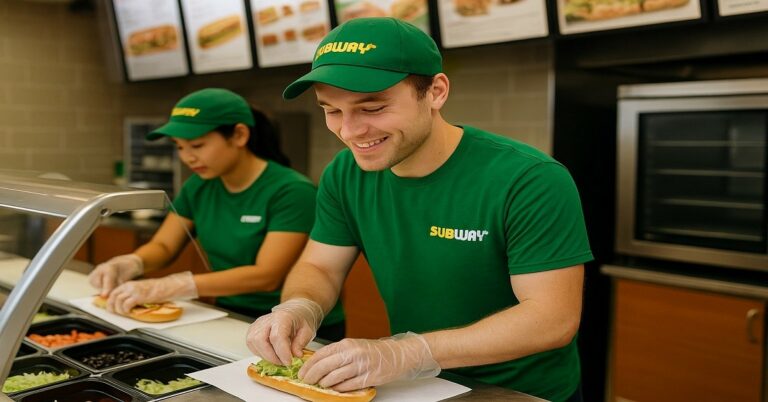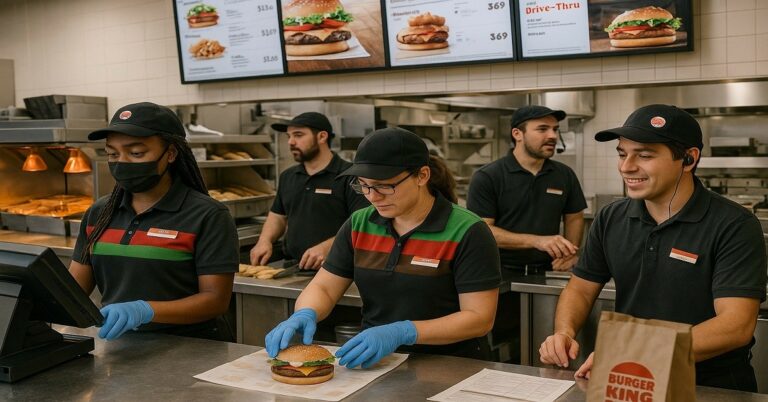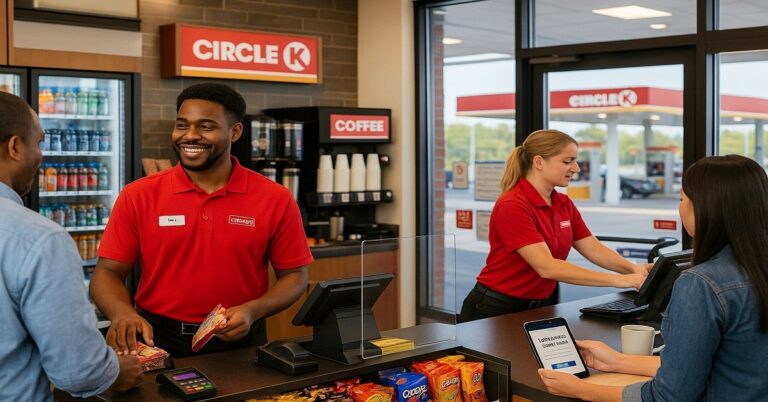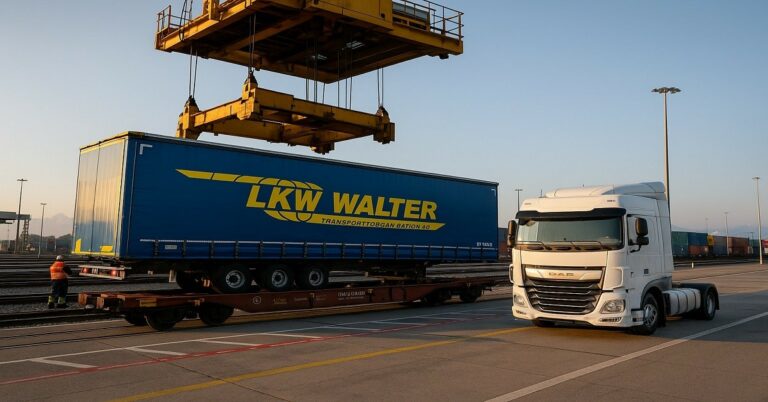Thinking about applying to McDonald’s jobs?
This guide explains how hiring typically works, what you’ll need to prepare, and what to expect during interviews and onboarding.
Always treat the job ad, your offer letter, and local labor rules as the final word.
How Hiring Works
Most applicants start on the official careers portal for their country or by searching postings for a specific franchise group.
Even if you apply through a brand site, your application is usually routed to the local restaurant that’s hiring.
That restaurant reviews your information, reaches out for an interview if there’s a match, and makes the final decision.
Because decisions are made at the store level, timelines vary. If you haven’t heard back after a few days, it’s acceptable to call or stop by.
Eligibility and Documents
In many countries, the common minimum age for restaurant roles is 16, though some places allow 14–15-year-olds to work with hour and task limits.
Those limits often include restrictions on late nights during school terms, weekly maximum hours, and which kitchen equipment minors may operate.
Wherever you apply, you’ll need to show you’re allowed to work: that could be a national ID, a passport, a residence or work permit.
If you are under 18, ask early about any work-permit paperwork so you can bring it to onboarding without delays.
Choosing a McDonald’s Job
“Crew” or “Team Member” work covers order taking, assembling food to standard, restocking, cleaning, and supporting kiosks or drive-thrus.
Kitchen roles focus on food preparation and safety procedures, with additional restrictions for minors where those apply.
Front-of-house or guest-experience roles emphasize hospitality, payments, and kiosk support.
Shift Manager, Department Manager, or Assistant Manager—add responsibilities such as delegating stations, verifying food-safety checks, and coaching.

Submitting The Application
You’ll create a profile, complete an online form with contact details, availability, and experience (or school activities if this is your first job), and submit.
Some restaurants follow up by text, phone, or email to schedule a short interview; others may invite you directly to an on-site conversation.
If you’re a student or under 18, say so clearly and list the precise hours you can work on school days, weekends, and during holidays.
Clear availability speeds decisions because managers build schedules around peak traffic.
Getting Through the Interview
Interviews are practical and short. Expect questions about reliability, teamwork, how you handle busy periods, and whether you can follow food safety.
If you lack formal experience, bring a one-page summary that includes volunteer work, school clubs, or family responsibilities.
Prepare two brief examples: a time you helped someone under pressure, and a time you solved a small problem without drama.
If sports or school commitments affect your hours, mention them honestly so the hiring manager can plan around them.
Onboarding and Training
New hires complete right-to-work checks and basic payroll data, then move into orientation and station training.
You’ll learn food-safety procedures, cleanliness standards, order flow, and how to use the equipment at your station.
Uniform details are provided during onboarding; some owners supply full uniforms, while others provide shirts and ask you to wear plain black pants.
Training continues on the floor with close supervision until you can run your station safely and consistently.
Pay and Salaries
As a broad U.S. snapshot in 2024–2025, crew and cashier roles frequently post in the $13–$14 per hour range across many markets
Kitchen roles often cluster around ~$14 per hour and slightly higher in large metros, and shift managers commonly fall between ~$15 and $22 per hour.
Assistant Manager or Assistant General Manager roles are often advertised at around $18–$25 per hour in hourly markets or roughly ~$55,000 per year.
Variations
Outside the U.S., pay is frequently anchored to national or regional minimum wages, collective agreements, or awards.
Premiums for nights, Sundays, or holidays may apply by law or policy. The correct rate for you is the one on your specific job ad or offer letter.
Benefits and development
Common elements in McDonald’s jobs include meal discounts, uniform support, and scheduling flexibility.
Health coverage, retirement savings, or paid time off depend on national law and employer policy.
In the U.S., many company-owned restaurants and participating franchisees offer education assistance through programs such as Archways to Opportunity.
In other countries, restaurants may partner with local training providers or offer nationally recognized certificates as part of their development.
How The Process Varies Worldwide
The hiring experience is standardized enough that you’ll recognize it anywhere—apply online, interview, verify your right to work, train on the job
The details change with local law and custom.
- In Canada and the U.K., under-18 scheduling limits are common, and right-to-work documentation requirements are strict.
- Australia and New Zealand frequently operate under awards or collective agreements that specify base rates and penalty rates for weekends and holidays; those rules drive both the posted pay and how rosters are built.
- In much of the EU, sector agreements and national minimums play a large role, and data privacy consents are more formal during the application.
- In Latin America, employers typically request a Video CV at the site and may require medical or food-handler certifications before you start; city wages can be higher than national minimums.
- In the Middle East, many applicants are foreign nationals hired on employer-sponsored visas, which adds an immigration step before start dates are confirmed.
- Across Asia, language skills can be a differentiator; night or weekend premiums and student rules vary by country or prefecture.
Wherever you are, the restaurant’s local careers page and your government’s labor site are the best sources for the exact age limits, documents, and wage rules.
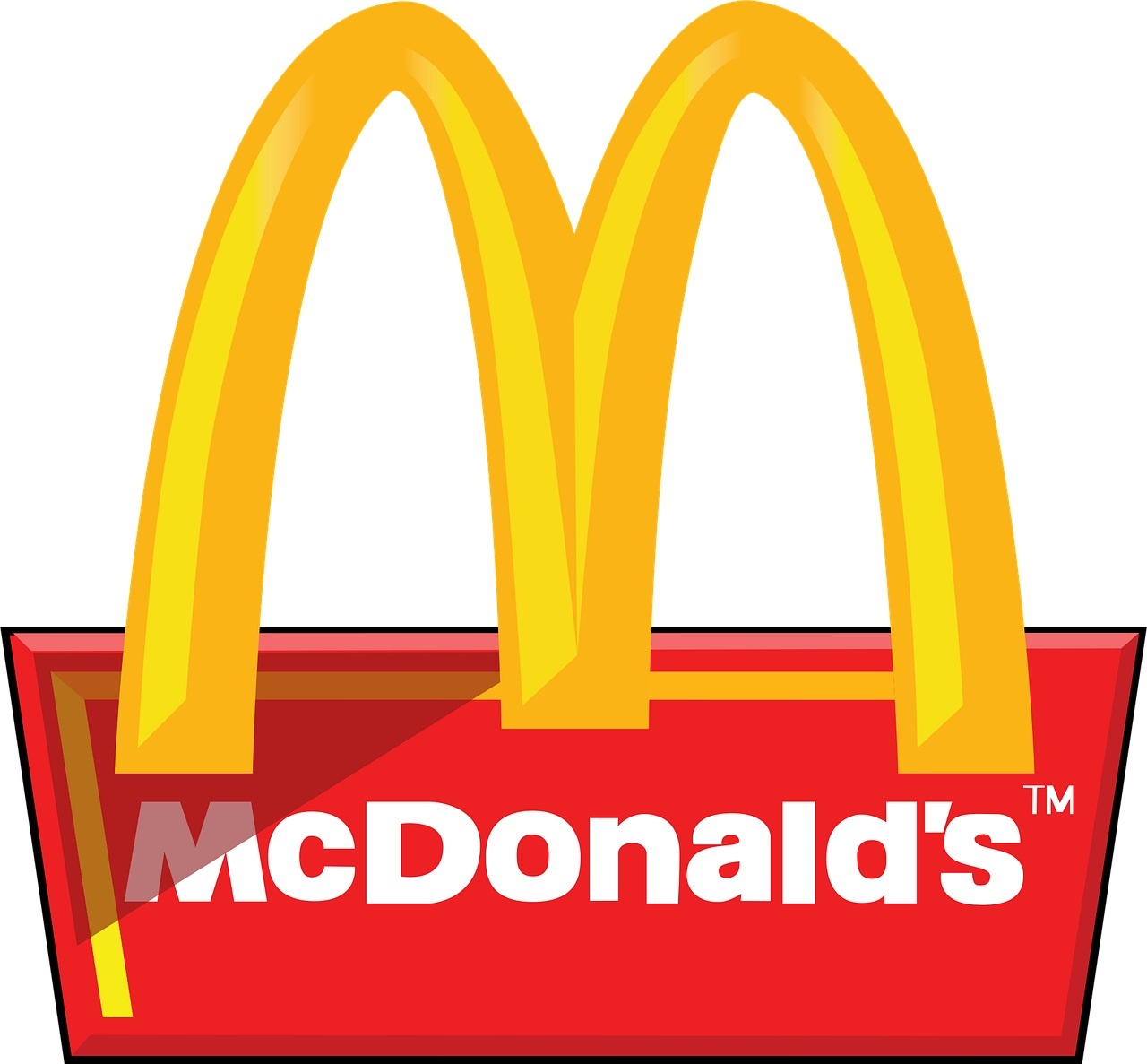
A Few Common Questions, Answered Plainly
Do I need experience? No, for most entry-level roles, reliability and willingness to learn matter more.
How fast is the hiring process? It depends entirely on the store’s needs; some decide within days, others take longer.
Will I be trained? Yes. You’ll receive orientation, food-safety and station training, plus on-the-job coaching.
Can I balance work with school or a second job? Usually yes, if you share precise availability up front and communicate changes early.
Final Thoughts
The process for McDonald’s jobs is simple: apply online, follow up courteously, interview with clear examples, and arrive at onboarding with the right documents.
Salaries and benefits are local, so treat posted ranges as guidance and rely on the rate and benefits in your specific offer.
If you plan to study or build a career in management, ask about education assistance and internal promotion tracks during the offer conversation.


